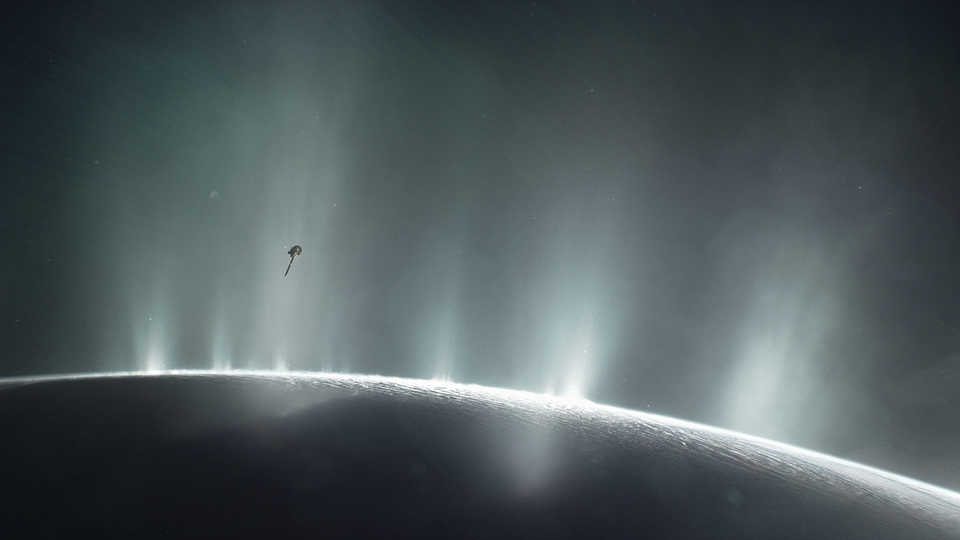Cassini Discovers an Ocean World

Next up in our farewell series for the Cassini mission: the amazing icy world, Enceladus! Enceladus was first observed close up by the Voyager 2 spacecraft long before Cassini started its mission. Voyager 2 returned images showing that Enceladus’s icy surface had many cracks but little cratering, indicating the presence of a heat source—and perhaps activity below the moon’s surface. Though Voyager’s quick flyby observations weren’t able to explore Enceladus in detail, they were crucial for setting the stage for Cassini’s mission over two decades later.
Shortly after Cassini swung by Saturn’s sixth-largest moon in 2005, observations revealed that those cracks weren’t the only sign of internal activity on Enceladus’s surface. Massive geysers driven by the moon’s internal heat were seen blasting material high above the world. Cassini made several close passes to Enceladus, revealing the gigantic plumes were composed of water vapor and ice particles. The geysers hurtle into space at speeds as high as 400 meters per second (800 miles per hour) and can reach distances of hundreds of miles away from Enceladus’s surface! In addition to good ol’ H2O (water ice and vapor), these plumes contain simple organic compounds, gases, salts, silica, and more—all signs of a complex chemical mix.
In 2015, Cassini researchers determined that the plumes were originating from a large subsurface ocean, buried below an ice shell 30 to 40 kilometers thick (19 to 25 miles). As recently as March of this year, we learned that the ocean of liquid water may not be as deep down as we thought. Cassini measured temperatures near the south pole that were warmer than expected, meaning that the interior must be warmer as well. Near the south pole, the ice shell may be only around five kilometers (three miles) deep.
The hydrothermal activity on Enceladus is exciting in large part because of comparisons we can make to locations here on Earth. We find extreme life thriving deep in Earth’s oceans around hydrothermal vents, and some of the earliest life may have formed in these types of conditions. So, despite Enceladus being a very cold moon, receiving very little sunlight, it might have the right conditions for life to exist, deep below its surface. Plus, Cassini found a relatively high amount of molecular hydrogen inside the plumes of gas and ice, which we often find released by life here on Earth. We’re looking forward to learning even more from Cassini’s observations in the coming years.
Not only will we continue to learn more about Enceladus from Cassini’s amazing tour, its research will also aid in the exploration of other worlds in the future. Enceladus is very important player in the exploration of ocean worlds in our solar system, a type of world we’re finding is much more common than we expected. And a lot of what we learned with Cassini is being applied to future missions such as the Europa Clipper mission.Planned to launch in the 2020s, the mission to Jupiter’s moon will be highly influenced by what we’ve learned from Enceladus with Cassini—from the design of the spacecraft’s trajectory to the details of its research agenda.
In addition to all that we’ve learned about Enceladus itself, we also learned about how the moon interacts with and influences the rings of Saturn. The plumes of Enceladus shoot so far out into space that they are responsible for the formation of one of Saturn’s rings, the E ring. Look for our next couple installments of Cassini articles this week, including one on Friday where we’ll go into more depth about Saturn’s rings.